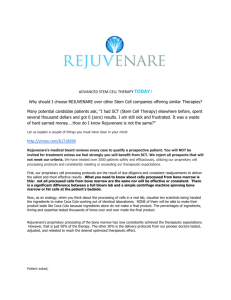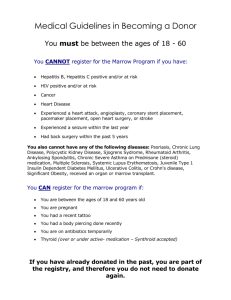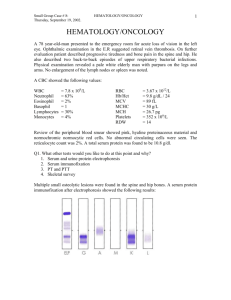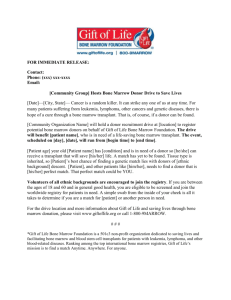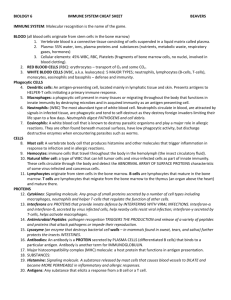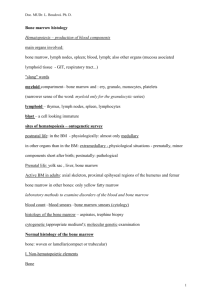Hematology Quiz: Peripheral Blood & Bone Marrow
advertisement
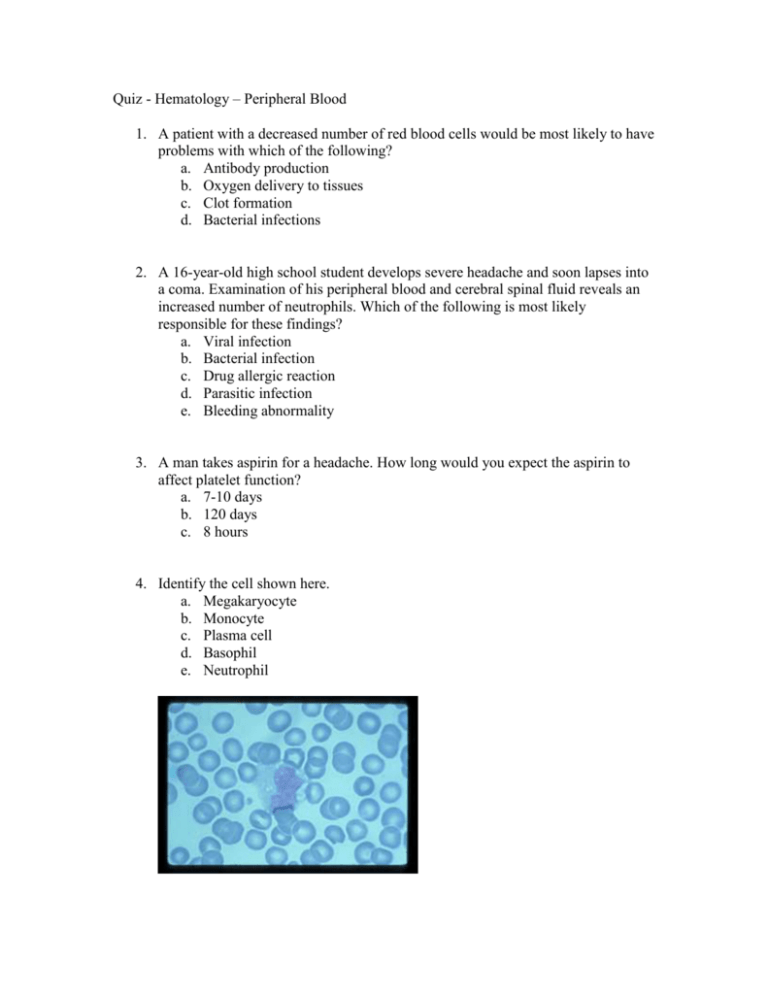
Quiz - Hematology – Peripheral Blood 1. A patient with a decreased number of red blood cells would be most likely to have problems with which of the following? a. Antibody production b. Oxygen delivery to tissues c. Clot formation d. Bacterial infections 2. A 16-year-old high school student develops severe headache and soon lapses into a coma. Examination of his peripheral blood and cerebral spinal fluid reveals an increased number of neutrophils. Which of the following is most likely responsible for these findings? a. Viral infection b. Bacterial infection c. Drug allergic reaction d. Parasitic infection e. Bleeding abnormality 3. A man takes aspirin for a headache. How long would you expect the aspirin to affect platelet function? a. 7-10 days b. 120 days c. 8 hours 4. Identify the cell shown here. a. Megakaryocyte b. Monocyte c. Plasma cell d. Basophil e. Neutrophil Quiz - Hematology – Bone Marrow 1. A 6-year-old boy with abnormal bleeding is found to have a low platelet count (thrombocytopenia). Which of the following would be most important to evaluate on examination of the boy’s bone marrow biopsy? a. Iron stores b. Megakaryocytes c. Plasma cells d. Neutrophils 2. Identify the type of bone marrow cell shown here. a. Erythroid precursor b. Granulocyte precursor c. Macrophage d. Megakaryocyte e. Adipocyte 3. Identify the type of bone marrow cell shown here (large cell in the middle of the field). a. Erythroid precursor b. Granulocyte precursor c. Macrophage d. Megakaryocyte e. Adipocyte






